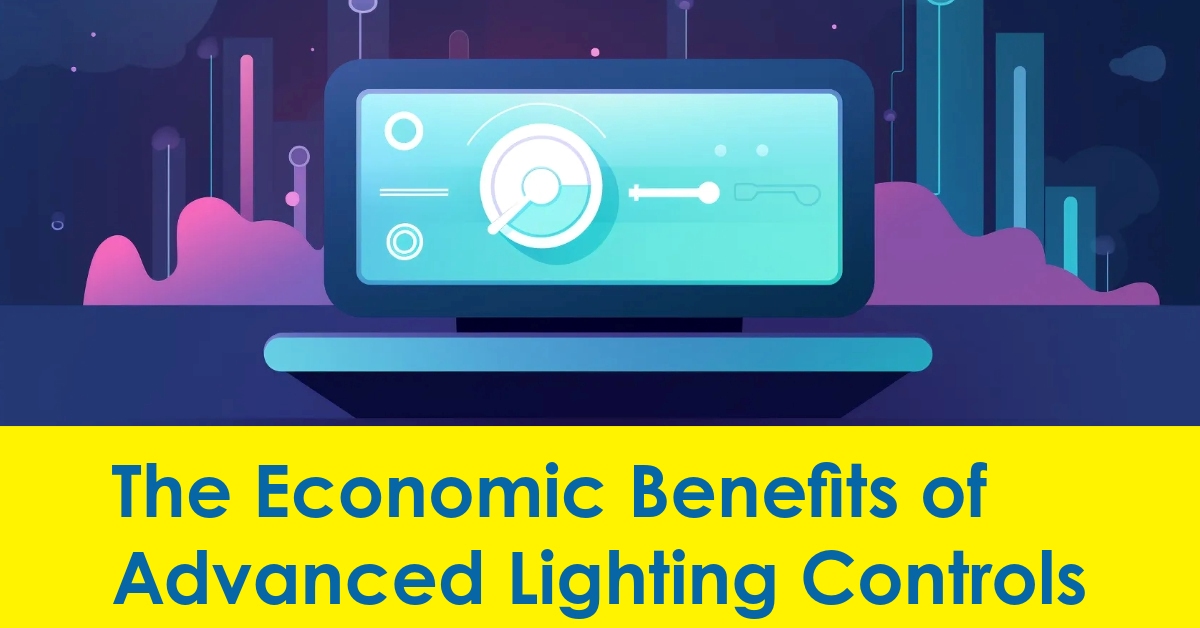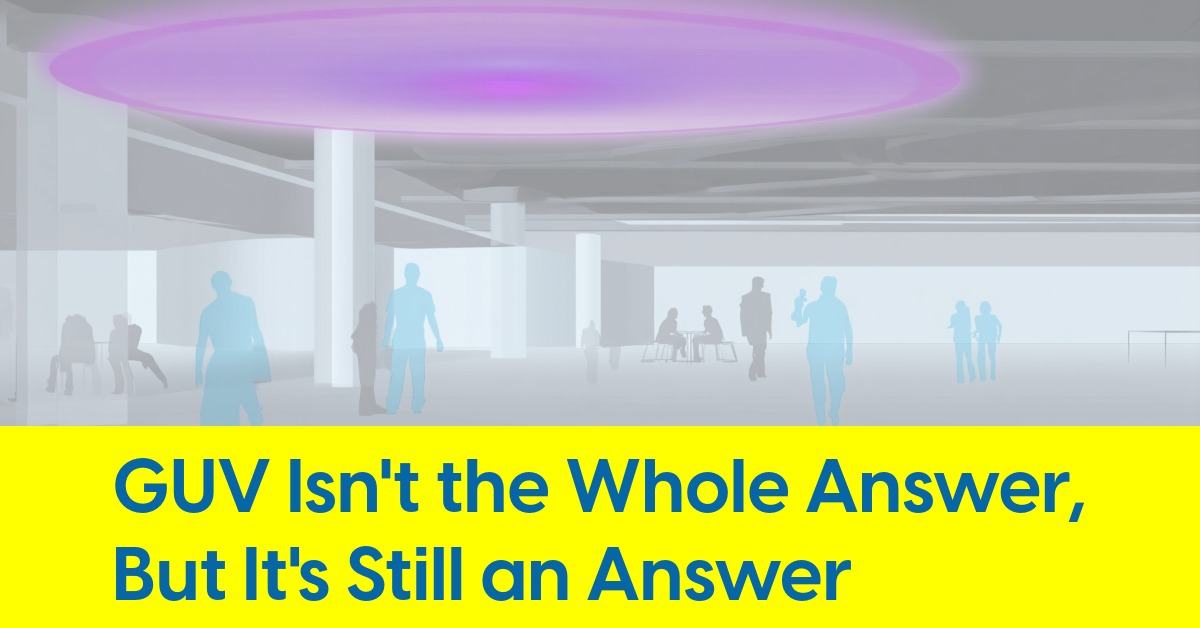November 22, 2023
The Economic Benefits of Advanced Lighting Controls

Author: Craig DiLouie, LC, CLCP is education director for the Lighting Controls Association
Networked lighting controls offer deep well of energy savings
As first-generation LED lighting systems begin to be replaced, a significant opportunity to maximize energy savings by incorporating networked lighting controls is emerging, particularly when HVAC integration is included.
Networked lighting controls have been demonstrated in research to reduce LED energy consumption by 50+ percent. By integrating HVAC control via lighting system-based occupancy sensors, total commercial building energy consumption can be reduced by up to 5-10 percent.
Applying these energy savings to Arizona and Connecticut as regional models, Arizona would realize net benefits of $217 million by 2030 and Connecticut would realize net benefits of $1.2 billion.
These are major findings of “Economic Potential of Networked Lighting Controls in Commercial Buildings,” a 2023 study conducted by the DesignLights Consortium (DLC), a consortium of utilities and energy efficiency organizations. The study was undertaken to evaluate networked lighting controls from a utility point of view so as to properly consider them for energy efficiency programs.
Energy efficiency programs are looking for cost-effective sources of energy savings. As energy efficiency programs begin to see saturation of LED lighting, they are evaluating the future feasibility of lighting, traditionally a deep well for energy savings. The DLC undertook the study to evaluate the energy savings opportunity for including networked lighting controls.
The results demonstrate that significant energy savings are achievable, but widespread adoption will require strong support from energy efficiency programs.
In review, networked lighting controls are control systems in which devices are networked for the implementation of multiple lighting control strategies. These devices may be embedded in luminaires at the factory or field installed. Networking connections may be wired or wireless. Programming and control zoning are software based, while data collection provides the potential for non-energy benefits related to occupant comfort, wellbeing, and security.
Integration with HVAC operation can occur at various levels of the building management system. Generally, the higher the level of integration, the greater the energy savings, system sophistication, and end-user expertise needed to control both the lighting and HVAC systems.
At the sensor level, a lighting system-based occupancy sensor could feature two outputs, one for the lighting circuit and one for an HVAC relay contact. At the field controller level, programmable controllers can be deployed. At the server level, the lighting and HVAC systems integrate via software and, if they are not designed based on the same protocol, an interface module is deployed.
The DLC study modeled benefits for Arizona and Connecticut. Conducted by NV5, the DLC study model used these states as fair representatives for their respective regions, the Northeast and Southwest. The building stock in these states was profiled using National Renewable Energy Laboratory ComStock and Commercial Buildings Energy Consumption Survey data.
The commercial building population was split into small and larger buildings, with different applicability for lighting controls. NV5 estimated that room-level lighting controls would be installed in small buildings (<25,000 sq.ft.). For larger buildings, the study assumed the installation of comprehensive networked lighting control systems for the purpose of evaluating potential energy savings. NV5 further estimated that 60 percent of large (>50,000 sq.ft.) buildings use a building automation system to control heating and cooling.
NV5 made assumptions regarding HVAC energy savings, active demand response (ADR), and plug load control. For large buildings using a building automation system to control heating and cooling, a 30 percent reduction in HVAC energy consumption achievable via integration with networked lighting systems was assumed, based on recent studies by the Pacific Northwest National Laboratory.
Another assumption was that non-critical loads could be reduced by up to 40 percent during peak power demand periods, provided the installed lighting controls (passive demand response) weren’t already reducing power beyond that level.
Finally, plug load control via networked lighting controls was evaluated for larger buildings but was found to not be cost-effective for energy efficiency programs to incentivize in most applications.
The DLC established two scenarios, one in which LED luminaires are installed paired with networked lighting controls, and the other in which LED luminaires are installed ready to accommodate future addition of networked controls. The study assessed the energy efficiency potential of these scenarios compared to standard LED luminaires, additional energy efficiency gained via HVAC integration, and demand reduction potential gained via using networked controls for ADR.
Networked lighting controls can produce significant energy savings. Networked lighting controls proved cost-effective particularly when integrated with HVAC systems. In the most optimistic scenario, Arizona’s commercial buildings would reduce total building energy consumption by 5 percent, resulting in net benefits of $217 million through 2030, and Connecticut’s by 10 percent, resulting in net benefits of $1.2 billion. Both states would also reduce peak demand and natural gas consumption by marginal percentages.
Networked lighting controls are well-suited for the next step in the evolution of energy efficiency incentives. LED has largely displaced traditional lighting systems in commercial buildings, particularly in regions of the country with high energy costs. Building owners are now beginning to replace first-generation LED systems, creating a fresh opportunity to incorporate lighting controls that if missed, could result in this opportunity being lost for a considerable amount of time. Energy efficiency program administrators need to deliver energy savings and are evaluating lighting, once considered the low-hanging fruit, as a category. The country as a whole is entering an era of decarbonization and electrification with increasing potential costs and risks for relatively energy-inefficient buildings. All these stars appear to be aligning toward support the widespread adoption of networked lighting controls.
A growing number of rebate programs do support networked lighting controls, producing some valuable lessons learned. Unfortunately, the prescriptive approach to rebates is not conducive to integration with other building systems, according to the DLC, despite the study concluding that incentives for networked lighting controls are good investments for energy efficiency programs, particularly when integrated with HVAC. NV5 calculated a Utility Cost Test Benefit/Cost Ratio of 3:1 to 6:1 for networked lighting controls integrated with HVAC, indicative of a high value.
“To achieve maximum, long-term energy savings, programs need to shift the paradigms that incentivize first-year savings and short-term goals,” the study’s authors stated. “Supporting NLC systems and integrations effectively will also require custom and turnkey incentive programs coupled with technical assistance and trade ally and customer education.”
Regulators and energy efficiency programs should take action. The DLC study recommended that energy efficiency programs should only offer rebates and other incentives for luminaires that include networked controls or are controls-ready. These programs should revise existing metrics and think longer-term to maximize energy savings. Funds should incentivize networked lighting control-HVAC integration and design programs that support this integration.
“This study demonstrated the economic wisdom and substantial demand reduction benefits of adding NLCs to planned and future LED lighting upgrades, especially the value of pairing networked LED lighting with HVAC systems,” the DLC concluded in its summary of the full report. “Inherent in these findings is the imprudence of installing new LEDs today that don’t either include NLCs or are equipped for the addition of future controls.”
Click here to download “Future-Proofing Energy Efficiency with Networked Lighting Controls,” a summary of the DLC report published in August 2023.
The Lighting Controls Association is a council of the National Electrical Manufacturers Association that provides education about lighting control technology and application, including articles, videos, design awards, news, resources, and Education Express, a free, 24/7 series of online courses covering everything from technology to design to commissioning.










